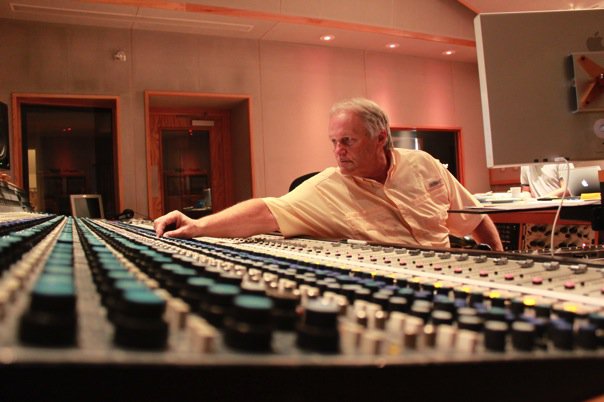|
Deathless (Revocation Album)
''Deathless'' is the fifth studio album by American technical death metal band Revocation, released on October 14, 2014 by Metal Blade Records. It is the band's last album to feature Phil Dubois-Coyne on drums. The album entered the US ''Billboard'' 200 at #124, selling 3,075 copies in the first week. Track listing Personnel Writing, performance and production credits are adapted from the album liner notes. Revocation * David Davidson – lead guitar, lead vocals * Dan Gargiulo – rhythm guitar, backing vocals * Brett Bamberger – bass * Phil Dubois-Coyne – drums Production * Zeuss – production, engineering, mixing * Alan Douches – mastering Artwork and design * Tom Strom – cover art * Brian J. Ames – layout Chart performance References External links * ''Deathless''at Metal Blade Metal Blade Records is an American independent record label founded by Brian Slagel in 1982. The US office for Metal Blade is located in Agoura Hills, Califor ... [...More Info...] [...Related Items...] OR: [Wikipedia] [Google] [Baidu] |
Revocation (band)
Revocation is an American technical death metal band from Boston, Massachusetts, consisting of guitarist and vocalist Dave Davidson, bassist Brett Bamberger and drummer Ash Pearson. The band has released eight studio albums, two EPs, and ten music videos since their formation. History Background (Cryptic Warning) (2000–2005) In 2000, guitarist/vocalist Dave Davidson, drummer Phil Dubois-Coyne and bassist Anthony Buda, met while attending a high school in Boston, Massachusetts. Influenced by Guns N' Roses and Metallica, the trio formed Cryptic Warning. As Cryptic Warning, the band recorded its first demo in 2002 and gained an underground following in Boston, and surrounding area. A second demo, ''Internally Reviled'', was recorded in 2004. In 2005, Cryptic Warning recorded and released an independent album, ''Sanity's Aberration'', but was not content with the quality of the album's production. Remembering those recordings, Davidson said: "We didn't record the album with a metal ... [...More Info...] [...Related Items...] OR: [Wikipedia] [Google] [Baidu] |
Lead Guitar
Lead guitar (also known as solo guitar) is a musical part for a guitar in which the guitarist plays melody lines, instrumental fill passages, guitar solos, and occasionally, some riffs and chords within a song structure. The lead is the featured guitar, which usually plays single-note-based lines or double-stops. In rock, heavy metal, blues, jazz, punk, fusion, some pop, and other music styles, lead guitar lines are usually supported by a second guitarist who plays rhythm guitar, which consists of accompaniment chords and riffs. History The first form of lead guitar emerged in the 18th century, in the form of classical guitar styles, which evolved from the Baroque guitar, and Spanish Vihuela. Such styles were popular in much of Western Europe, with notable guitarists including Antoine de Lhoyer, Fernando Sor, and Dionisio Aguado. It was through this period of the classical shift to romanticism the six-string guitar was first used for solo composing. Through the 19t ... [...More Info...] [...Related Items...] OR: [Wikipedia] [Google] [Baidu] |
Metal Blade Records Albums
A metal (from Greek μέταλλον ''métallon'', "mine, quarry, metal") is a material that, when freshly prepared, polished, or fractured, shows a lustrous appearance, and conducts electricity and heat relatively well. Metals are typically ductile (can be drawn into wires) and malleable (they can be hammered into thin sheets). These properties are the result of the ''metallic bond'' between the atoms or molecules of the metal. A metal may be a chemical element such as iron; an alloy such as stainless steel; or a molecular compound such as polymeric sulfur nitride. In physics, a metal is generally regarded as any substance capable of conducting electricity at a temperature of absolute zero. Many elements and compounds that are not normally classified as metals become metallic under high pressures. For example, the nonmetal iodine gradually becomes a metal at a pressure of between 40 and 170 thousand times atmospheric pressure. Equally, some materials regarded as metals ca ... [...More Info...] [...Related Items...] OR: [Wikipedia] [Google] [Baidu] |
2014 Albums ...
The following is a list of albums, EPs, and mixtapes released in 2014. These albums are (1) original, i.e. excluding reissues, remasters, and compilations of previously released recordings, and (2) notable, defined as having received significant coverage from reliable sources independent of the subject. For additional information about bands formed, reformed, disbanded, or on hiatus, for deaths of musicians, and for links to musical awards, see 2014 in music. First quarter January February March Second quarter April May June Third quarter July August September Fourth quarter October November December References {{DEFAULTSORT:2014 albums Albums 2014 File:2014 Events Collage.png, From top left, clockwise: Stocking up supplies and personal protective equipment (PPE) for the Western African Ebola virus epidemic; Citizens examining the ruins after the Chibok schoolgirls kidnapping; Bundles of wat ... [...More Info...] [...Related Items...] OR: [Wikipedia] [Google] [Baidu] |
Cover Art
Cover art is a type of artwork presented as an illustration or photograph on the outside of a published product such as a book (often on a dust jacket), magazine, newspaper (tabloid), comic book, video game ( box art), music album ( album art), CD, videotape, DVD, or podcast. The art has a primarily commercial function, for instance to promote the product it is displayed on, but can also have an aesthetic function, and may be artistically connected to the product, such as with art by the creator of the product. Album cover art Album cover art is artwork created for a music album. Notable album cover art includes Pink Floyd's '' The Dark Side of the Moon, King Crimson's In the Court of the Crimson King,'' the Beatles' ''Sgt. Pepper's Lonely Hearts Club Band'', '' Abbey Road'' and their self-titled "White Album" among others. Albums can have cover art created by the musician, as with Joni Mitchell's ''Clouds'', or by an associated musician, such as Bob Dylan's art ... [...More Info...] [...Related Items...] OR: [Wikipedia] [Google] [Baidu] |
Audio Mastering
Mastering, a form of audio post production, is the process of preparing and transferring recorded audio from a source containing the final mix to a data storage device (the master), the source from which all copies will be produced (via methods such as pressing, duplication or replication). In recent years digital masters have become usual, although analog masters—such as audio tapes—are still being used by the manufacturing industry, particularly by a few engineers who specialize in analog mastering. Mastering requires critical listening; however, software tools exist to facilitate the process. Results depend upon the intent of the engineer, the skills of the engineer, the accuracy of the speaker monitors, and the listening environment. Mastering engineers often apply equalization and dynamic range compression in order to optimize sound translation on all playback systems. It is standard practice to make a copy of a master recording—known as a safety copy—in case t ... [...More Info...] [...Related Items...] OR: [Wikipedia] [Google] [Baidu] |
Audio Mixing
Audio mixing is the process by which multiple sounds are combined into one or more channels. In the process, a source's volume level, frequency content, dynamics, and panoramic position are manipulated or enhanced. This practical, aesthetic, or otherwise creative treatment is done in order to produce a finished version that is appealing to listeners. Audio mixing is practiced for music, film, television and live sound. The process is generally carried out by a mixing engineer operating a mixing console or digital audio workstation. Recorded music Before the introduction of multitrack recording, all the sounds and effects that were to be part of a recording were mixed together at one time during a live performance. If the sound blend was not satisfactory, or if one musician made a mistake, the selection had to be performed over until the desired balance and performance was obtained. However, with the introduction of multitrack recording, the production phase of a mode ... [...More Info...] [...Related Items...] OR: [Wikipedia] [Google] [Baidu] |
Audio Engineer
An audio engineer (also known as a sound engineer or recording engineer) helps to produce a recording or a live performance, balancing and adjusting sound sources using equalization, dynamics processing and audio effects, mixing, reproduction, and reinforcement of sound. Audio engineers work on the "technical aspect of recording—the placing of microphones, pre-amp knobs, the setting of levels. The physical recording of any project is done by an engineer... the nuts and bolts." Sound engineering is increasingly seen as a creative profession where musical instruments and technology are used to produce sound for film, radio, television, music and video games. Audio engineers also set up, sound check and do live sound mixing using a mixing console and a sound reinforcement system for music concerts, theatre, sports games and corporate events. Alternatively, ''audio engineer'' can refer to a scientist or professional engineer who holds an engineering degree and who de ... [...More Info...] [...Related Items...] OR: [Wikipedia] [Google] [Baidu] |
Record Producer
A record producer is a recording project's creative and technical leader, commanding studio time and coaching artists, and in popular genres typically creates the song's very sound and structure. Virgil Moorefield"Introduction" ''The Producer as Composer: Shaping the Sounds of Popular Music'' (Cambridge, MA & London, UK: MIT Press, 2005). Richard James Burgess, ''The History of Music Production'' (New York: Oxford University Press, 2014)pp 12–13Allan Watson, ''Cultural Production in and Beyond the Recording Studio'' (New York: Routledge, 2015)pp 25–27 The record producer, or simply the producer, is likened to film director and art director. The executive producer Executive producer (EP) is one of the top positions in the making of a commercial entertainment product. Depending on the medium, the executive producer may be concerned with management accounting or associated with legal issues (like copyrights o ..., on the other hand, enables the recording project through entrep ... [...More Info...] [...Related Items...] OR: [Wikipedia] [Google] [Baidu] |
Drum Kit
A drum kit (also called a drum set, trap set, or simply drums) is a collection of drums, cymbals, and other auxiliary percussion instruments set up to be played by one person. The player (drummer) typically holds a pair of matching drumsticks, one in each hand, and uses their feet to operate a foot-controlled hi-hat and bass drum pedal. A standard kit may contain: * A snare drum, mounted on a stand * A bass drum, played with a beater moved by a foot-operated pedal * One or more tom-toms, including rack toms and/or floor toms * One or more cymbals, including a ride cymbal and crash cymbal * Hi-hat cymbals, a pair of cymbals that can be manipulated by a foot-operated pedal The drum kit is a part of the standard rhythm section and is used in many types of popular and traditional music styles, ranging from rock and pop to blues and jazz. __TOC__ History Early development Before the development of the drum set, drums and cymbals used in military and orchestral mu ... [...More Info...] [...Related Items...] OR: [Wikipedia] [Google] [Baidu] |
Bass Guitar
The bass guitar, electric bass or simply bass (), is the lowest-pitched member of the string family. It is a plucked string instrument similar in appearance and construction to an electric or an acoustic guitar, but with a longer neck and scale length, and typically four to six strings or courses. Since the mid-1950s, the bass guitar has largely replaced the double bass in popular music. The four-string bass is usually tuned the same as the double bass, which corresponds to pitches one octave lower than the four lowest-pitched strings of a guitar (typically E, A, D, and G). It is played primarily with the fingers or thumb, or with a pick. To be heard at normal performance volumes, electric basses require external amplification. Terminology According to the ''New Grove Dictionary of Music and Musicians'', an "Electric bass guitar sa Guitar, usually with four heavy strings tuned E1'–A1'–D2–G2." It also defines ''bass'' as "Bass (iv). A contraction of Double bass ... [...More Info...] [...Related Items...] OR: [Wikipedia] [Google] [Baidu] |
Backing Vocalist
A backing vocalist is a singer who provides vocal harmony with the lead vocalist or other backing vocalists. A backing vocalist may also sing alone as a lead-in to the main vocalist's entry or to sing a counter-melody. Backing vocalists are used in a broad range of popular music, traditional music, and world music styles. Solo artists may employ professional backing vocalists in studio recording sessions as well as during concerts. In many rock and metal bands (e.g., the power trio), the musicians doing backing vocals also play instruments, such as guitar, electric bass, drums or keyboards. In Latin or Afro-Cuban groups, backing singers may play percussion instruments or shakers while singing. In some pop and hip hop groups and in musical theater, they may be required to perform dance routines while singing through headset microphones. Styles of background vocals vary according to the type of song and genre of music. In pop and country songs, backing vocalists may ... [...More Info...] [...Related Items...] OR: [Wikipedia] [Google] [Baidu] |








